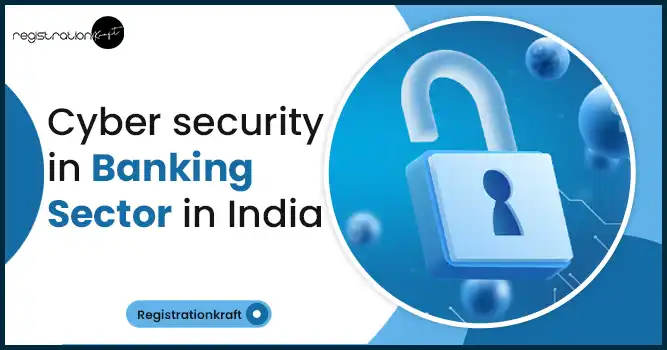Cyber Security in Banking Sector in India

In any kind of financial transaction, people remain cautious about fraud that could lead to the loss of money. And, it tends to turn riskier when the transaction is being done online. Every day we come to know about numerous online frauds related to financial transactions in newspapers and online publications. This makes people worry about the loss of their hard-earned money. Now when it comes to tackling cyber fraud in India, almost all banks and financial institutions in India put in place a number of cyber security measures that aim to assure account holders and others that all their financial transactions are totally safe & secure.
Banks have taken several steps towards sprucing up cyber security to counter detrimental risks. These include security firewalls, intrusion detection equipment, and end-to-end encryption. Banks have also hired and settled multiple teams of cyber safety experts who keep a constant check on the network for any kind of fraudulent activity and react instantly to any potential threats.
What does cyber security mean in the banking sector?
In the banking world, cyber security means several steps banks and financial institutions take to safeguard their monetary systems from online threats. Due to the growing dependence on technology in the world of finance, the need for steadfast cybersecurity measures has become important like never before.
Banks adopt different types of tools and technologies to find and avoid cyberattacks like data hacking, identity theft, malware, viruses, and unsanctioned access to banking networks and confidential information.
How important is cyber security in the banking sector in India?
The first and foremost objective of cyber security in the banking sector is to safeguard the possessions of customers in every possible way.
Facing a cyber-attack not only leads to the loss of confidential information of customers but can also downgrade the usual functions of a bank, resulting in inconvenience to customers and possibly causing losses.
Banks opt for a number of cyber security measures to counter cyber threats, including security firewalls, intrusion detection measures, and others. They also employ teams of security experts who monitor the network for suspicious activity and respond quickly to any potential threats.
In addition, spiteful threats that keep an eye on a person’s account balance and identity also damage the bank’s standing and trustworthiness. This makes cyber security an essential element when it comes to safeguarding the bank’s immaterial belongings, like goodwill and business equity.
Also Read: How Insurance Companies Detect and Prevent Fraudulent Claims?
Common Cyber Threats in The Banking Industry
Various reports indicate that there has been an increase cyber-related frauds across the country. From phishing emails to identity thefts, both banks as well as people have become extremely cautious about different types of cyber attacks that may wreak havoc to people’s lives.
Some of the common cyber threats are:
Phishing and Social Engineering
These attacks are counted among the most widely present threats in the banking industry. Phishing activity is made to steal the sensitive and confidential information of a person’s bank account like account login passwords and credit card numbers by representing a fake identity.
Social engineering refers to an extremely serious financial cyber threat that involves technical strategy and very precise attacks to make people lose their hard-earned money.
Malware and Ransomware
These cyber-attacks are quite common when the user is on a public internet network. They primarily target users having accounts in small banks that don’t rely on highly advanced cyber security strategies
Cloud-centric Attacks
Sensitive data and different types of software systems are present in a cloud-based network. The new-age financial services rely extensively on cloud migration, however, security can be easily jeopardized by threats posed by cloud service providers and global issues.
Supply Chain Attacks
Supply chain attacks make the use of malicious code to damage financial products and updates throughout the entire chain, centered on a software vendor. The hackers tend to break several types of client networks in these types of attacks.
Remote Access Risks
Employees that tend to work remotely often work in regions that don’t have proper cyber security coverage or unsolicited networks. Furthermore, rather of visiting actual banking premises, digital-first clients rely on mobile apps to logon to their accounts. Data breaches and financial cybersecurity threats become pretty much common in these scenarios.
Addressing these vulnerabilities through awareness, education, and frontline security software is the best way to go.
Cyber Security Applications in Banking
Cyber threats are on the verge of development and it is high time the banking industry takes strict action to safeguard its identity. The website hackers get used to advanced protection in case when new technologies loom updated attacks by using tools and technology that compromise security. For banks and financial institutions, it is necessary to put in place a number of cyber security tools and strategies that guarantee the protection of the customer’s valuable data and money. A few of them are defined below:
Software Security
Software applications that are vital to company operations are protected by application security. It can assist you in coordinating your security rules with file-sharing rights and multi-factor authentication. It includes features such as an application that permits listing and code signing. Software security will unavoidably improve with the application of AI in cyber security.
Network Surveillance
The process of continuously scanning a network for indications of suspicious or invasive activity is called network monitoring. It is commonly used in conjunction with firewalls, antivirus programs, and intrusion detection systems (IDS) as security solutions. Network security monitoring can be done automatically or manually with this program.
Risk Handling
Risk management, data integrity, security awareness training, and risk analysis are all included in financial cyber security. Risk assessment and the mitigation of potential harm are fundamental components of risk management. Sensitive data security is another aspect of data security.
Safeguarding Crucial Systems
Connections to wide-area networks aid in preventing attacks on large-scale systems. It maintains the strict safety guidelines that the industry has established for users to adhere to when taking cyber security precautions to safeguard their devices. It keeps an eye on every program and audits users, servers, and the network for security flaws.
The Conclusion
Cyber security is an issue for every business and a bank is no different. Having the right cyber security policies and processes in place is essential for banks, particularly for those that keep large amounts of transaction histories and personal data on file. Cyber security in banking is a problem that cannot be solved. As digitalization increases, hackers are more likely to target the banking industry.
Categories: Banking
Tags:





